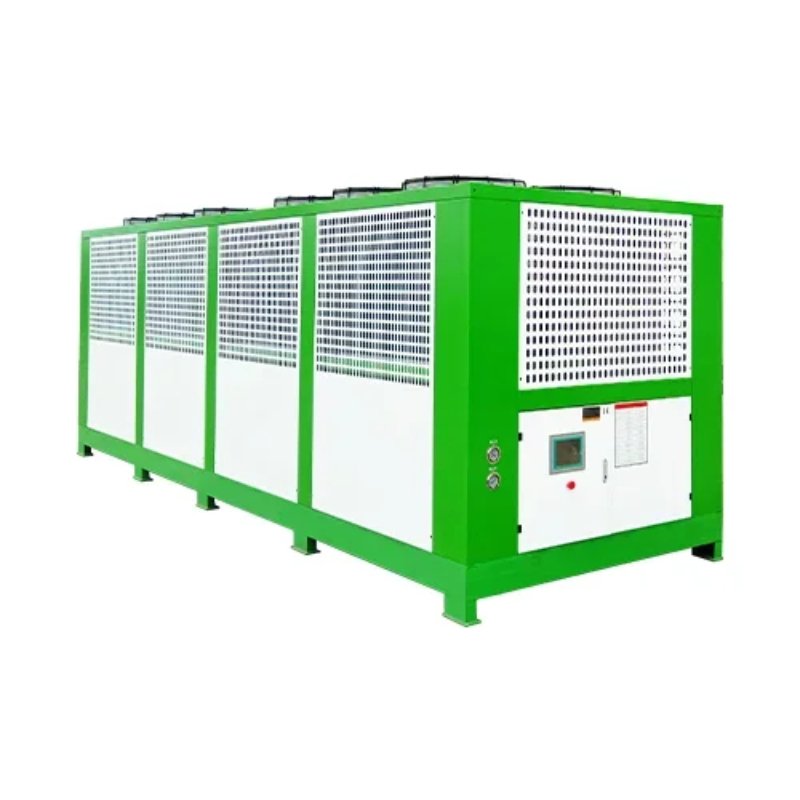Обзор распространенных неисправностей промышленных чиллеров
В производственных и технологических отраслях стабильный контроль температуры является обязательным условием. Промышленные чиллерыСистемы водяного или воздушного охлаждения являются основой многих производств B2B, обеспечивая эффективный отвод тепла от производственных процессов. Однако эти системы не застрахованы от проблем при эксплуатации. Отказы могут происходить постепенно из-за износа, загрязнения или условий окружающей среды, а могут возникать внезапно из-за неисправности компонентов. К наиболее часто встречающимся проблемам относятся снижение эффективности охлаждения, чрезмерный шум при работе, аварийные сигналы высокого или низкого давления, проблемы с циркуляцией воды и неисправности электрооборудования. Раннее распознавание этих симптомов позволяет руководителям предприятий принять меры по устранению неполадок до того, как простой оборудования повлияет на производственные графики и обязательства по поставкам.
Плохая работа системы охлаждения - причины и способы устранения
Снижение производительности охлаждения часто является первым признаком неполадок в промышленном чиллере. Это может быть вызвано потерей хладагента, загрязнением теплообменников, ограничением воздушного потока в конденсаторе в моделях с воздушным охлаждением или плохой работой градирни в агрегатах с водяным охлаждением. В некоторых случаях температура окружающей среды или условия вентиляции также могут ограничивать способность системы эффективно отводить тепло.
Чтобы решить эту проблему, операторы должны в первую очередь убедиться, что змеевики конденсатора или градирни чистые и беспрепятственные. Необходимо проверить уровень хладагента и выявить возможные утечки. Насосы, вентиляторы и другие компоненты должны быть проверены на предмет правильной работы, поскольку даже незначительная неисправность может повлиять на общую эффективность. Поддержание чистого воздушного потока вокруг агрегатов с воздушным охлаждением и оптимального потока воды в системах с водяным охлаждением имеет решающее значение для восстановления производительности.

Ненормальный шум во время работы
Изменения шума - это не просто раздражение, они могут быть ранним предупреждением о механических проблемах. Компрессоры с изношенными подшипниками могут издавать скрежещущие звуки, а поврежденные или несбалансированные вентиляторы в охладители с воздушным охлаждением могут создавать вибрации, проходящие через всю систему. В устройствах с водяным охлаждением кавитация или несоосность насоса часто приводят к появлению дребезжащих или гудящих звуков. Неплотно прилегающие панели или крепежные детали также могут усиливать вибрацию и шум.
Своевременное решение проблем с шумом позволяет предотвратить вторичный ущерб. Практический подход включает в себя фиксацию незакрепленных компонентов, смазку движущихся частей в соответствии с графиком технического обслуживания, а также обеспечение правильной балансировки и выравнивания вентиляторов и насосов. На объектах, работающих в чувствительных к шуму средах, снизить уровень шума помогут демпферы вибрации.
Понимание и устранение аварийных сигналов давления
Сигнализаторы высокого и низкого давления являются важнейшими элементами безопасности в промышленных охладителях, предназначенными для защиты компонентов от повреждения. Сигналы высокого давления могут быть вызваны блокировкой конденсатора, снижением расхода воды в агрегатах с водяным охлаждением, высокой температурой окружающей среды в моделях с воздушным охлаждением или переполненным контуром хладагента. И наоборот, сигналы тревоги при низком давлении обычно связаны с нехваткой хладагента, обледенением испарителя или ограничением потока хладагента из-за неисправного расширительного клапана.
При реагировании на сигналы тревоги высокого давления технический персонал должен сосредоточиться на очистке теплоотдающих поверхностей, проверке работы системы водоснабжения и обеспечении достаточной вентиляции. В случае тревоги по низкому давлению следует проверить уровень хладагента, подтвердить расход воды и протестировать работу клапанов. Устранение первопричины, а не просто сброс сигнала тревоги обеспечивает долгосрочную надежность.
Проблемы с потоком и циркуляцией воды
В обоих водоохлаждаемые чиллеры и моделей с воздушным охлаждением и встроенным водяным контуром, стабильный поток воды необходим для эффективной работы. Проблемы с потоком часто возникают из-за засорения фильтров, блокировки сетчатых фильтров, неисправности насоса или попадания воздуха в систему. Эти проблемы могут привести к колебаниям температуры, снижению холодопроизводительности и даже повреждению компонентов, если их не устранить.
Систематический подход включает в себя очистку сетчатых фильтров и фильтров, продувку системы для удаления застрявшего воздуха, проверку работы насоса и направления вращения, а также проверку правильного положения всех клапанов. Для предприятий с несколькими технологическими линиями эффективным профилактическим средством является постоянный контроль расхода.
Неисправности электрической системы
Неисправности электрооборудования в промышленных холодильниках могут привести к сбоям в работе и дорогостоящим затратам. Проблемы могут включать в себя нестабильное электропитание, ослабление электрических соединений, неисправность компонентов управления или перегрузку цепей. Симптомы варьируются от периодических отключений до полного отказа от запуска.
Операторы должны проверить стабильность поступающего питания, осмотреть клеммы на предмет коррозии или ослабления, а также протестировать компоненты панели управления, такие как реле и контакторы. Важно следовать протоколам промышленной безопасности и, при необходимости, привлекать квалифицированных электротехников для проведения диагностики и ремонта. В производстве B2B надежность электрооборудования так же важна, как и механическая целостность, для поддержания производительности.

Профилактическое обслуживание для долговременной работы
Профилактическое обслуживание - самый эффективный способ сократить количество аварийных ремонтов и избежать незапланированных простоев. Последовательный план технического обслуживания должен включать очистку поверхностей конденсатора, контроль качества воды, смазку подшипников и насосов, а также анализ вибрации. Запись рабочих параметров в течение определенного времени поможет выявить тенденции в работе и обнаружить ранние признаки ухудшения.
Для операторов B2B интеграция технического обслуживания чиллеров в более широкий график технического обслуживания объекта обеспечивает эффективное использование ресурсов. Независимо от того, управляется ли один агрегат или целый парк промышленных чиллеров, плановые проверки являются основой надежного охлаждения технологических процессов.
Заключение и советы профессионалов
Когда постоянные или сложные проблемы выходят за рамки возможностей штатных специалистов, следует обратиться к опытному специалисту. производитель промышленных чиллеров это самый быстрый путь к экспертной диагностике и долгосрочной надежности. Промышленные чиллеры - незаменимые помощники в производстве и охлаждении технологических процессов. Понимание распространенных видов отказов и структурированное устранение неисправностей позволяет руководителям предприятий поддерживать стабильное производство и сократить время дорогостоящих простоев. При сложных проблемах или постоянных нарушениях производительности сотрудничество с опытными поставщиками услуг по обслуживанию промышленных чиллеров гарантирует надежную и эффективную работу системы на долгие годы.
